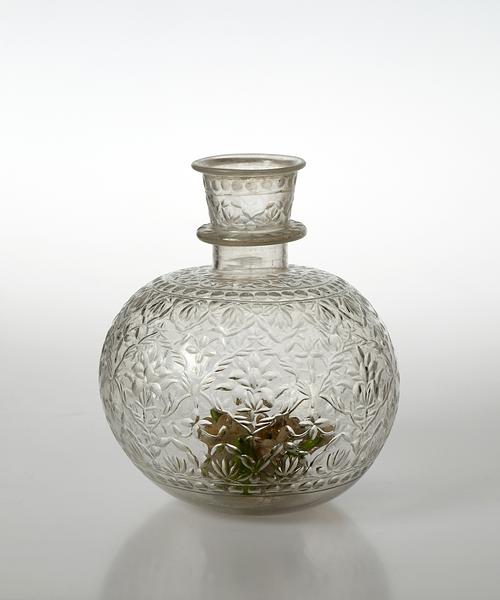Glass huqqa with cut decoration and polychrome floral decoration inside
India; mid-18th century
H: 17.5; Diam: 15.3 cm
A huqqa – the Indian term for a water pipe – is made up of several parts, this one being the base to hold water. At the top was a long, decorative pipe with matching bowl for tobacco and charcoal, and a shorter pipe connected to a hose wound with silk that terminated in a mouthpiece.
Among the many intricately designed huqqas from the Mughal period, the type with floral, sculptural decoration inside is rare. This fine detail, using readymade pieces of glass that were shaped over an open fire, was clearly inspired by the Venetian glass that had been sold in the region since the 16th century.
While most glass products were locally made, tests made on similar huqqa bases show that glass from Europe was also used.
Inv. no. 17/2010
Published in:
Christie's, London, 24/9-2003, lot 173;
Sotheby’s, London, 6/10-2010, lot 234;
Tara Desjardins: “Patna, Lucknow, and the curious crest of John Deane: An investigation of two Indian glass centers and a colonial drinking set”, Journal of Glass studies, 2021, 63, fig. 7, p. 259;
Tara Desjardins: Mughal glass: a history of glassmaking in India, New Delhi 2024, cat. 63, p. 151;
